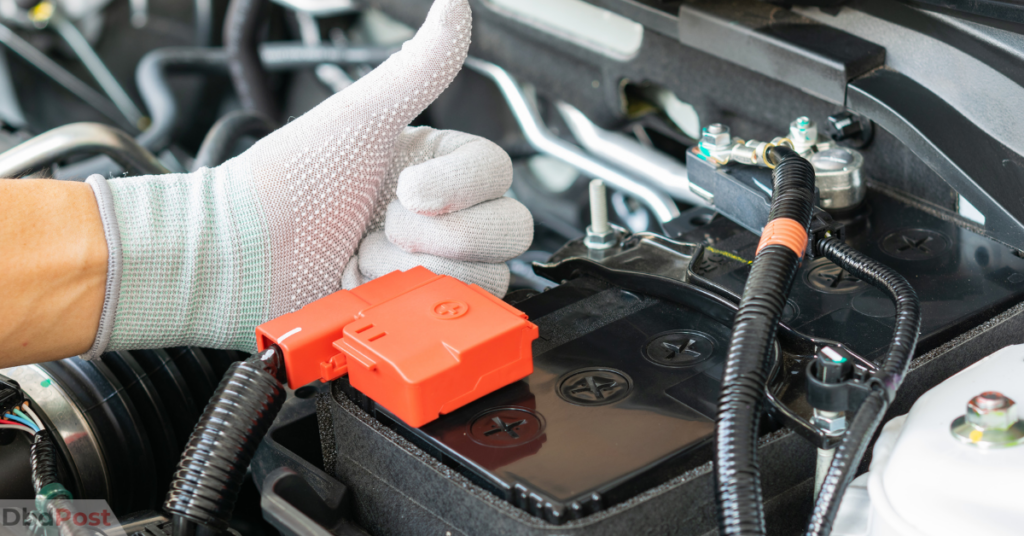As winter fades and spring takes over, many drivers think about fresh starts. That includes giving your car the attention it needs. Cold weather takes a toll on every vehicle.
Road salt, potholes, and freezing temperatures all cause damage. These effects are easy to miss until something goes wrong, which is why spring car care matters.
A thorough check-up now can prevent costly repairs later. Some tasks are easy, while others require professional tools and expertise.
Start with the basics. A complete exterior wash is one of the most straightforward but essential steps. Winter roads leave behind salt and grime.
This buildup clings to your car’s frame, especially underneath. If you leave it alone, it can rust. Over time, that corrosion spreads and weakens the structure.
Use a high-pressure spray to wash off the undercarriage. Follow up with soap, water, and a soft sponge for the paint. Remember to dry the surface properly to prevent water spots.
Next, take care of the interior. During winter, slush, sand, and salt often make their way inside. Mats get dirty, and carpets collect moisture.
Vacuum everything thoroughly. Wipe down the dashboard, doors, and steering wheel. Clean the windows for better visibility in the spring sunshine.
Small things make a big difference. If your cabin air filter smells musty or hasn’t been changed, replace it. Fresh filters help remove pollen, which is crucial in allergy season.
Now is also a good time to check your windshield wipers. Winter weather wears down the blades quickly. If they squeak, skip, or leave streaks, swap them out.
Changing wiper blades takes less than five minutes. It doesn’t require tools or advanced skills. Just match the size and follow the instructions on the package.
While you’re at it, check the windshield washer fluid. If it’s low, top it off. Choose a fluid made for spring and summer since winter mixes may not be ideal in warmer months.
Tire care is another task many car owners can handle. If you’ve been using winter tires, now’s the time to switch. Warmer weather can wear them out faster.
Before you make the change, inspect your tires closely. Using a coin or gauge, look at the tread depth. Anything below the legal minimum should be replaced.
Remember to check the air pressure. Cold air causes tires to deflate slightly, causing them to be underinflated. Use a digital gauge and adjust it to the recommended level in your manual.
Next, look under the hood. Several fluid levels, including engine oil, coolant, brake fluid, and transmission fluid, need to be monitored.
Each one plays a key role in your vehicle’s performance. Ensure they’re clean, at the proper level, and contamination-free. If anything looks off, consider changing it or getting a second opinion.
Although these are tasks you can do yourself, not everything should be a DIY project. Specific systems need specialized tools or knowledge, and fixing them without training can worsen things.
Wheel alignment is one of those tasks. Potholes and icy roads can throw off your alignment without you realizing it. If your car pulls to one side or your steering wheel isn’t straight, alignment could be the issue.
Correct alignment allows even tire wear and keeps the car stable at high speeds. However, this job requires laser tools and alignment racks, which only service centers have.
Your car’s suspension system might also need attention. Winter roads are hard on shocks, struts, and joints, and even a tiny crack in a bushing can affect ride comfort and control.
Professionals know how to spot damage in these areas. They can check for leaks, wear, and structural problems. Catching these early prevents more expensive repairs down the road.
Brake inspections are another must. Wet, salty roads can cause corrosion in brake lines and rotors. Worn pads reduce stopping power and increase the risk of accidents.
If your brakes squeal, grind, or feel soft when pressed, check them immediately. Mechanics use tools to measure rotor thickness and test brake fluid condition. They can also bleed the lines and restore full braking power.
Then there’s the battery. Cold weather drains battery life quickly. If your car has trouble starting in winter, that battery might be near the end of its life.
A visual inspection won’t tell you everything. Auto shops use electronic testers to measure voltage and reserve capacity. They’ll let you know if the battery is healthy or needs replacing.
Now’s also the right time to prepare your air conditioning system. You haven’t used it for months. And nothing is worse than finding out it doesn’t work on the first hot day.
Leaks, low refrigerant, and mold buildup are common spring issues. A technician can inspect the system, recharge it, and clean it if needed. It prevents breakdowns when temperatures rise.
Taking care of your vehicle in the spring is about more than appearance. It’s about safety, reliability, and efficiency. Ignoring minor issues now often leads to more significant, more expensive problems later.
That’s why a combination of home care and professional help works best. You save money by doing the easy stuff. But you also keep your vehicle in peak shape by trusting experts with the rest.
Spring is a season of renewal. It’s also time for drivers to reset and prepare for new journeys. A little effort now ensures smooth, stress-free travel all season long.
Check your car one system at a time. Wash it, clean it, swap the tires and wipers, top up fluids, and inspect what you can.
Then, schedule a visit to your trusted mechanic. Let them handle what you can’t. Together, it all adds up to safer drives and fewer surprises.
As the days grow longer and the roads dry up, you’ll appreciate the effort. Your car will feel smoother, and your drives will be quieter.
And most importantly, you’ll be ready for spring road trips, weekend getaways, and everything else the season has in store.
- 107shares
- Facebook Messenger
About the author
Garry Hamm is a Senior Contributor at DbdPost, renowned for his expertise in producing well-researched and engaging digital content. With years of experience in journalism and digital storytelling, Garry excels at breaking down complex subjects into accessible, reader-friendly narratives. His dedication to accuracy and quality makes him a reliable and respected voice in the digital media landscape.





